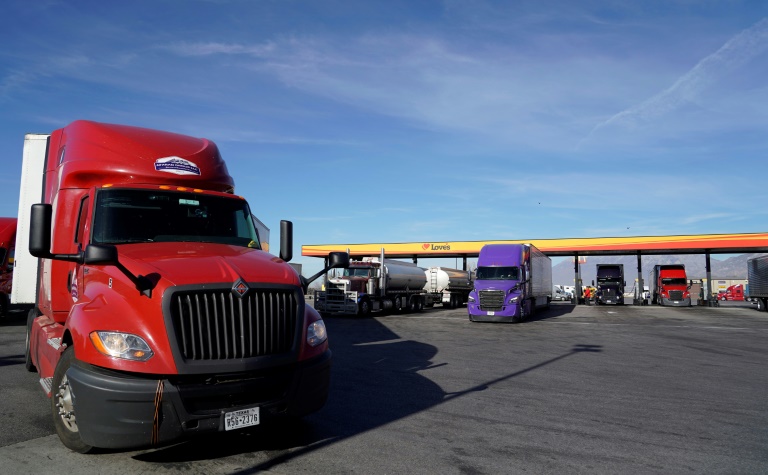The tight US labor market has not spared the trucking industry, where “help wanted” pleas are plentiful, wages are on the rise, and drivers recently have scored signing bonuses of up to $20,000.
In an economy that hauls more than $12 trillion in freight annually, the problems facing trucking have drawn the attention of President Joe Biden, who is seeking to restore his political fortunes as United States faces the highest inflation in nearly 40 years.
Biden’s White House has convened a task force to examine the supply chain snarls partly blamed for the price increases and shortages, including in shipping and trucking.
But debate is raging in the largely non-union trucking industry over whether the challenges are exceptional in a competitive pandemic labor market, and what policy changes would have the biggest impact.
On one side, the American Trucking Associations (ATA), where large hauling companies are influential, has said the combination of aging drivers and rising demand from e-commerce suggest the shortage will be long lasting and could reach crisis proportions within a decade.
But the Owner-Operator Independent Drivers Association (OOIDA) has argued that remarkably high turnover in some trucking segments points to a “flaw” in working conditions, and has called for steps to resolve driver frustrations such as unpaid waiting time.
A key point of contention between the two sides of the debate is a proposal to drop the national minimum driving age on interstate trucking to 18 from 21.
ATA backs the shift as a way to recruit younger drivers, but OOIDA warns the measure would threaten safety and only worsen turnover problems.
– Unpaid wait times –
Pre-pandemic government data showed the size of the trucking workforce was increasing, but also growing older.
A 2019 Census Bureau analysis said the number of truckers was at an “all-time high” after a big decline following the 2008 recession, but the median age, 46, was five years older than the overall US workforce.
Veteran drivers express passion for a difficult profession, but also point to frustrations.
“It’s been the freedom to move around the country and see the country,” said Danny Smith, who drives for about six days each week, traveling from his Florida home to other southern states.
Sixty-three-year-old Smith, who in 2016 hit a milestone of three million safe miles at his Tennessee-based company Big G Express, told AFP he was especially frustrated with detention time — waiting to load or unload — which eats up to 20 hours of his week, much of it unpaid.
“It’s frustrating the amount of time I give away for free and I’m away from home,” Smith said.
Smith said the problem has worsened in recent months as big box stores, in an effort to build inventories due to problems elsewhere in the supply chain, commissioned more trucks than they could handle efficiently.
Lamar Buckwalter, a third-generation trucker, who regularly drives to Texas from his Pennsylvania home, said the issues are caused by high demand.
“There’s not a driver shortage, but the truck shortage is created by the customers because they don’t want to pay.”
– Typical turnover? –
The industry’s problems are most severe in the long-distance market, where turnover rates regularly top 90 percent, according to ATA data, meaning almost all drivers are replaced in a year.
But a March 2019 study by the Bureau of Labor Statistics said the long-distance market, which employs less than a quarter of all drivers, is burdened by “unattractive” working conditions.
“As a whole, the market for truck drivers appears to work as well as any other blue-collar labor market,” the paper said.
“There is thus no reason to think that given sufficient time, driver supply should fail to respond to price signals in the standard way.”
But that was before the pandemic created widespread labor shortages, and increasing competition among firms to fill open positions.
Steve Viscelli, a sociologist at the University of Pennsylvania who has written extensively on trucking, said many problems would be solved if trucking companies paid drivers for detention time.
“More and more of the cost of inefficiency has been put onto the driver, whose time is not valued,” said Viscelli, who called dropping the driving age a “terrible idea.”
A trucking plan released last week by the Biden administration will study unpaid detention time, but also announced new recruitment efforts, including a pilot program for drivers aged 18-21.











